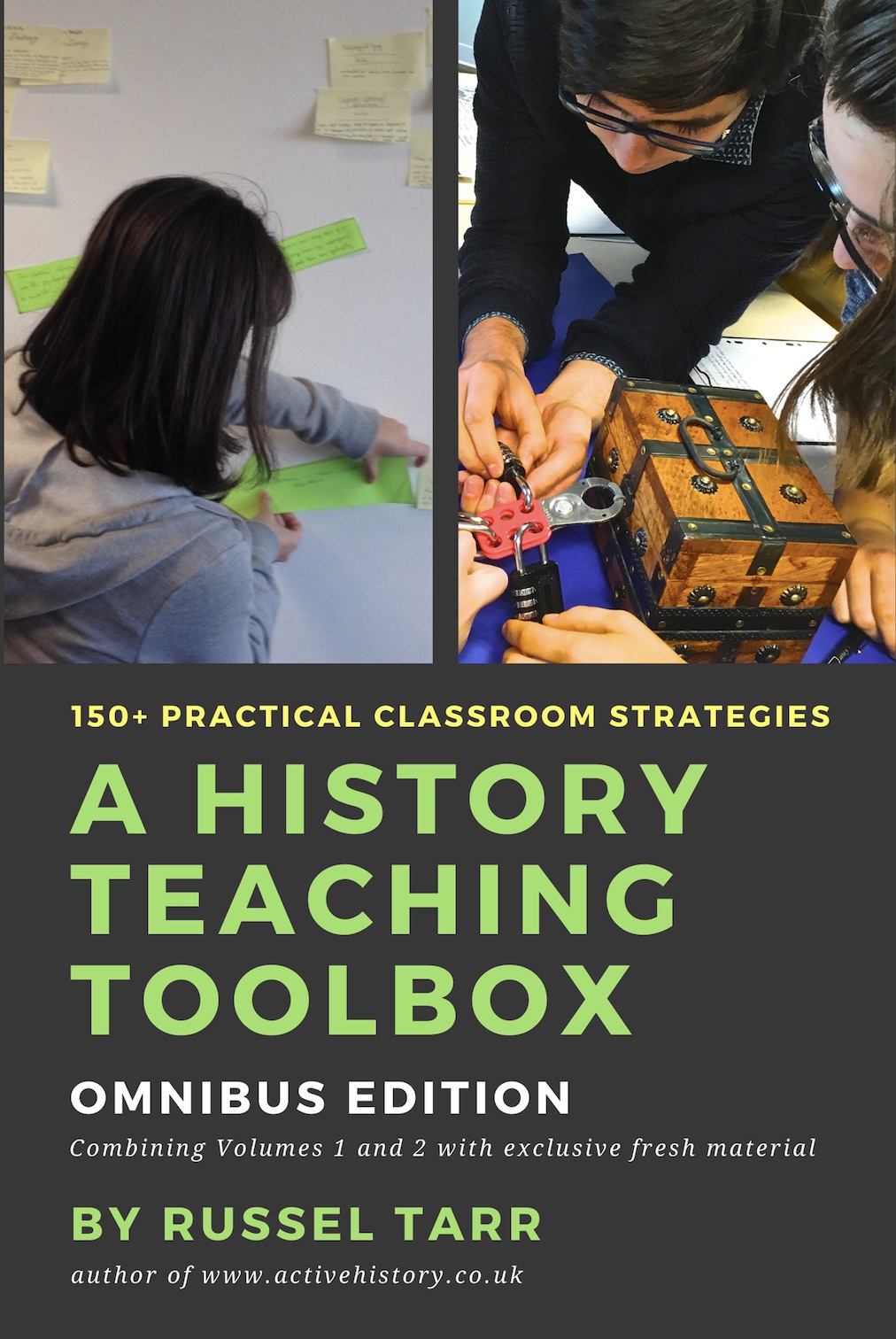World History teaching resources for the high school classroom: lesson plans, worksheets, quizzes and simulation games for KS3, IGCSE, IB and A-Level teachers.
 To what extent was the League of Nations a success? (1930s)
To what extent was the League of Nations a success? (1930s)
Note: Full and comprehensive teaching materials for this topic can be found on the ActiveHistory section for this topic.
From the syllabus
Focus Points
How successful was the League in the 1930s?
What were the long-term consequences of the peace treaties of 1919-23?
What were the consequences of the failures of the League in the 1930s?
How far was Hitler's foreign policy to blame for the outbreak of war in 1939?
Was the policy of appeasement justified?
How important was the Nazi-Soviet Pact?
Why did Britain and France declare war on Germany in September 1939?
Specified Content
The impact of the World Depression on the work of the League after 1929.
The League of Nations: The failures of the League in the 1930s, including Manchuria and Abyssinia.
The collapse of international order in the 1930s
The increasing militarism of Germany, Italy and Japan
Hitler's foreign policy to 1939: - the Saar - remilitarisation of the Rhineland - involvement in the Spanish Civil War - Anschluss with Austria - appeasement - crises over Czechoslovakia and Poland - the outbreak of war.
Past Questions
| 2016 Nov (region 3) | 2016 Nov (region 2) | 2016 Nov (region 1) | 2016 June (region 3) | 2016 P1 June (region 2) | 2016 P1 June (region 1) | 2015 Sample paper 1 | ||
| 1930s | a [4 marks] | [sourcework paper this year] | [sourcework paper this year] | [sourcework paper this year] | What disagreements between the two superpowers were there at the Potsdam Conference? | Describe the increase in Italian militarism in the 1930s. |
Describe Hitler’s takeover of Austria. |
What did Hitler achieve by the Anschluss? |
| b [6 marks] | [sourcework paper this year] | [sourcework paper this year] | [sourcework paper this year] | Why was there tension over Berlin in the years 1945–49? | Why did Chamberlain, on his return from Munich in 1938, say, ‘I believe it is peace for our time’? |
Why, in 1939, did Stalin make a deal with Germany rather than with Britain or France? |
Why did Hitler want to take over Czechoslovakia? |
|
| c [10 marks] | [sourcework paper this year] | [sourcework paper this year] | [sourcework paper this year] | How effective was the USSR’s attempt to control Eastern Europe by 1948? Explain your answer. | ‘The British-French guarantee to Poland was more responsible than the Nazi–Soviet Pact for the Second World War.’ How far do you agree with this statement? | ‘The remilitarisation of the Rhineland was more important to Hitler’s plans than was the Spanish Civil War.’ How far do you agree with this statement? |
‘The policy of appeasement was a mistake.’ How far do you agree with this statement? |
Classroom activities
Cartoon Analysis 1 | 2
Analyse a series of cartoons by hovering over details and answering exam-style questions. When you have finished, the computer will provide you with a printout comparing your answer to a model answer. A great way to revise and develop sourcework skills.
 Decision-Making Simulation: Hitler's Foreign Policy [interactive]
Decision-Making Simulation: Hitler's Foreign Policy [interactive]
A major decision making game with three associated worksheets designed to get students thinking about Hitler's main policies and actions 1933-39.
Causes of World War Two, 1919-39: An Google Earth flyover [interactive]
Designed as an alternative to the above worksheet. A Google Earth tour, complete with a worksheet, designed to teach students about the main events, but also to encourage them to reflect on the shifting pattern of international alliances. [note: needs Google Earth to be installed!]
WHO Caused World War Two? - Debate Task
The class is divided into various groups, each of which has the task of producing prosecution questions against one country, and defence replies for another. A thorough way of rounding off the unit and looking at the evidence from a fresh perspective.
The Historiography of World War Two: Was Hitler a Gambler, or a Planner, in Foreign Affairs?
The AJP Taylor debate is explained here clearly, with discussion points attached and reference made to other historians who have contributed to the debate. I use this at IB level rather than IGCSE, although it could be a good extension activity for more able IGCSE students.
Interactive Revision Quizzes and Resources
Fling the Teacher Quiz

Ideal for a starter activity. Outline the main task for the day at the beginning of the lesson. Then, give students 10 minutes to play the game. Anyone finishing within the 10 minutes should get points reflecting the amount of minutes left on the clock, then move directly on to the main task for the lesson whilst the rest of the class continue to play.
Repeat this format for ALL your revision lessons to create a "Revision Leaderboard" with a prize given to the overall high score at the end of revision time.
"Who Am I?" Challenge - International Relations in the 1930s
Each team will be presented with a clue about a key historical figure. They get 50 points if they guess it correctly. If they wish to 'pass', they get further (easier) clues but the points available steadily decline. An incorrect guess at any point means they get zero points for that round. You can play as many rounds as you wish. It's a great way to revise!
IGCSE Revision: Homepage

© 1998-2025 Russel Tarr, ActiveHistory.co.uk Limited (Reg. 6111680)
1 Torrin Drive, Shrewsbury, Shropshire, SY3 6AW, England
Privacy Policy | Contact






